NEWS, EVENTS & BLOG
BLOG
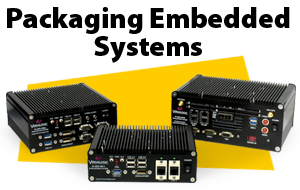
Packaging Embedded Systems
Press Office, VersaLogic Corporation, 11/10/21
Enclosing Embedded Systems
Embedded systems, comprised of single board computers, I/O devices, power supply, and all the interconnecting cables, need to be contained in a protective enclosure of some type, for almost any application. Even the toughest circuit board assembly is susceptible to physical damage without some kind of protection.
Additional benefits of system enclosures, whether they are light duty or “bomb proof”, include:
- Protection. Protect against factors such as dust and dirt, moisture, physical damage, electrostatic discharge (ESD), and even small metal objects that can fall into the system and cause damage through a short circuit.
- Cooling. An enclosure can be a part of the cooling system for a system. Many embedded computers, and some I/O devices, are designed to bolt to a larger metal surface to conduct heat away for the units. Metal enclosures, especially those with ridges or fins, create a large heat-dissipating surface for the system components inside.
- Mobility. Enclosures provide convenience when moving a system to different locations. A packaged system keeps everything needed in one place, eliminates concerns with cables being unplugged, or plugged back into the wrong location, etc. This particularly applies to proof-of-concept systems that may need to be moved to several demonstration sites.
- Safety. Although much of electronic development is performed on an open bench, many organizations require some type of enclosure to better protect against high voltage shock, fire, and other potential hazards. That’s one reason that VersaLogic offers a number of enclosed evaluation systems that make initial system testing safe and convenient.
Harsh Environments
If a system will operate in a harsh environment, it’s important to consider the conditions it will need to endure. Will it be subjected to extreme temperatures, humidity, altitude? What about shock or vibration?
For environments with hazardous or damaging dust or high moisture levels, a sealed enclosure is usually required. Sealed enclosures have various levels of Ingress Protection, or IP. IP ratings are used to define the level of sealing effectiveness. The first digit represents the degree of protection from solids, such as dust. The second digit defines protection from liquids. The highest IP rating, 67, means that an enclosure has total dust protection and full immersion protection for up to 30 minutes up to 1 meter.
For situations with mechanical shock or vibration a ridged enclosure is usually required. Limiting the flex and distortion of the enclosure prevents additional stress on the internal components. Of course the embedded computer board itself must be designed and tested to function in that kind of challenging environment. Standardized testing, such as MIL-STD-202H used by VersaLogic, measures the ruggedness of embedded computer boards while fully operational.
Other Considerations
- Electrical – High voltage becomes a safety concern when it enters an enclosure. Using UL rated power supplies, and proper termination and insulation, is essential to protect both those manufacturing the system, and those using it.
- Moving parts – Fans help various components in the system stay cool, but they also increase noise and decrease reliability. A system with a single fan can overheat and stop operating if the fan stops turning. A system with multiple fans is more reliable, but incurs an increase in cost, noise, and power consumption. For systems that operate 24/7, a fanless design is preferred from a reliability standpoint.
- Cooling – Cooling active components inside an enclosure is a major concern.
In some environments a slotted panel with a fan to circulate external (ambient) air is an easy solution.
In applications that require more of a sealed enclosure, cooling becomes more difficult. An internal fan may be needed to circulate air within the enclosure to eliminate hot spots.
Completely fanless systems need even more attention with regard to a heat flow path. Since the temperature inside a sealed enclosure may rise considerably above the external temperature, it may be necessary to spec components rated for higher temperature operation. In most cases a full rated industrial temperature computer board (-40 to +85C) may provide the safety margin that’s needed in fully sealed systems.
- Cable routing – The enclosure needs to be large enough to accommodate both the embedded computer and all of its connectors and cables. Cables have a minimum bend allowance which must be taken into account. Space needed for cabling within the enclosure may be considerable.
Packaging Examples
Here are some examples of real-world embedded enclosures.
Unitronix’s REN (rugged embedded nodes) series, is a fully developed rugged embedded enclosure solution. Featuring VersaLogic’s Blackbird and Grizzly, the REN series provides rapid development allowing engineers to configure it to their requirements.
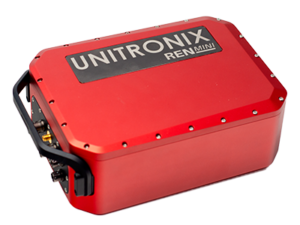 The REN Mini utilizes VersaLogic’s High-Performance Blackbird computer
The REN Mini utilizes VersaLogic’s High-Performance Blackbird computer
The REN boxes are completely sealed thick-wall enclosures for high-end i7 and Xeon Denverton based processor boards. They are milled out of a solid block of aluminum.
VersaLogic’s evaluation system enclosures illustrate typical fanless systems. All of them use the aluminum body of the enclosure as a large heat sink. Internally the heat plate of the embedded processor board is bolted directly to the lid of the enclosure.
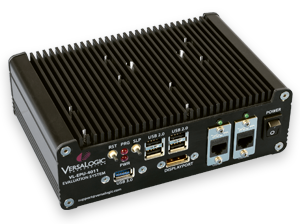 A credit-card sized embedded board (“Harrier”) with error-correcting memory (ECC), TPM security, dual- or quad-core Apollo Lake processor, and plenty of on-board I/O.
A credit-card sized embedded board (“Harrier”) with error-correcting memory (ECC), TPM security, dual- or quad-core Apollo Lake processor, and plenty of on-board I/O.
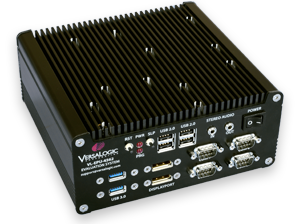 A medium sized high performance computer (“Blackbird”) featuring Intel Core i7-6822 or i5-6442 Skylake processor with up to 32 GB RAM, two GbE, and three Mini PCIe Sockets
A medium sized high performance computer (“Blackbird”) featuring Intel Core i7-6822 or i5-6442 Skylake processor with up to 32 GB RAM, two GbE, and three Mini PCIe Sockets
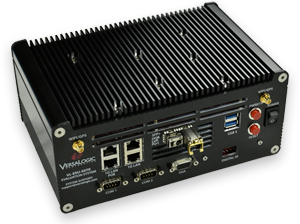 An embedded server system (“Grizzly”) features Intel 8, 12, or 16-core processor, up to 128 GB ECC RAM, 10 GbE networking, and -40°C to +85°C operation.
An embedded server system (“Grizzly”) features Intel 8, 12, or 16-core processor, up to 128 GB ECC RAM, 10 GbE networking, and -40°C to +85°C operation.
GET Engineering’s Compact Embedded Systems (CES), is a small form factor rugged fanless family of products used in military and industrial applications. It provides fast time to market with many options to mix and match I/O and protocols.
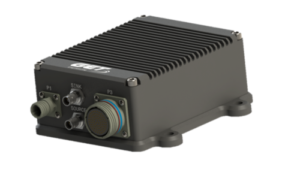 GET Engineering’s Mission Computer CES
GET Engineering’s Mission Computer CES
Learn More
Want to know more about enclosure issues? Let’s start a conversation.
